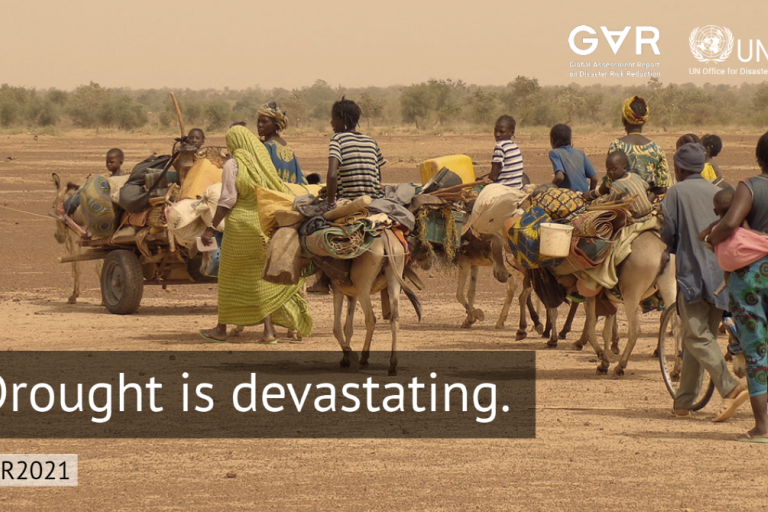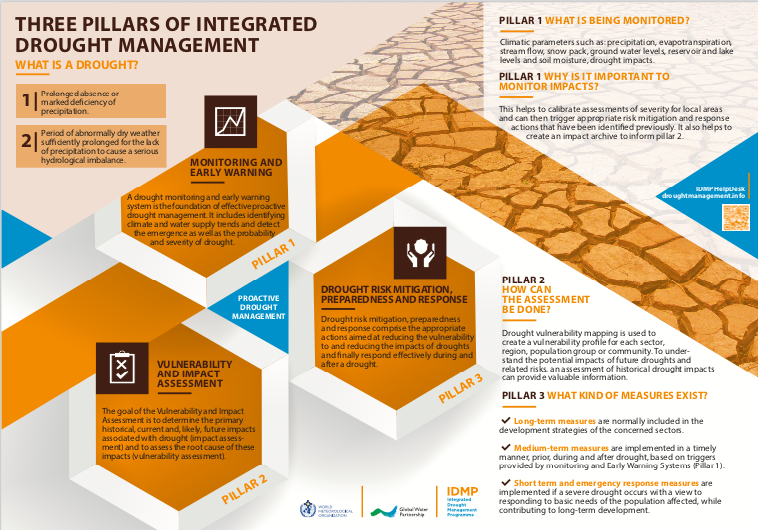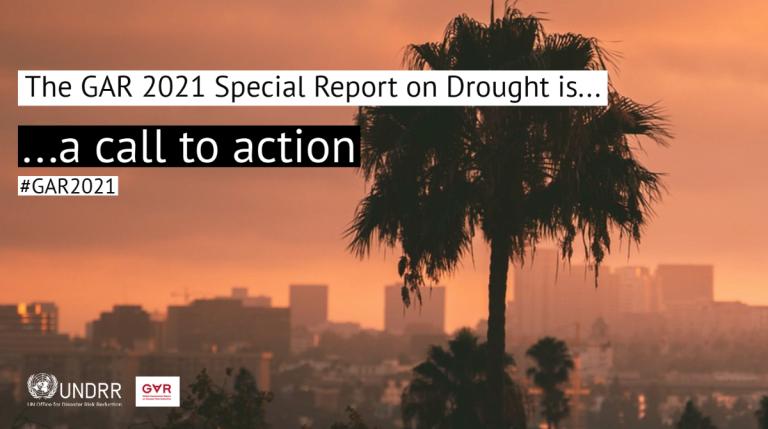Drought report calls for new management approach
Drought has directly affected 1.5 billion people so far this century, more than any other slow-onset disaster. This number will grow dramatically because of climate change, environmental degradation and demographic shifts. Urgent action is therefore needed to improve drought management and prevention, according to a new report.

Drought has directly affected 1.5 billion people so far this century, more than any other slow-onset disaster. This number will grow dramatically because of climate change, environmental degradation and demographic shifts. Urgent action is therefore needed to improve drought management and prevention, according to a new report.
The Global Assessment Report on Disaster Risk Reduction (GAR) Special Report on Drought 2021 says that drought poses a threat to the achievement of the Sendai Framework for Disaster Risk Reduction, the Sustainable Development Goals and human and ecosystems health and wellbeing.
“Climate change is increasing temperatures and disrupting rainfall patterns, thus increasing the frequency, severity and duration of droughts in many regions. As the world moves towards being 2°C warmer, urgent action is required to better understand and more effectively manage drought risk to reduce the devastating toll on human lives and livelihoods,” says the report commissioned by the United Nations Office for Disaster Risk Reduction and incorporating input from the World Meteorological Organization.
It calls for proactive and innovative approaches to drought risk management – reflecting the long-held view of WMO which has campaigned for more proactive, coordinated and sustainable management policies to replace the current crisis-driven piecemeal response.

The report recommends the establishment of new coordination and collaboration mechanisms to rapidly advance the understanding and management of drought risk. This is the philosophy behind WMO’s Integrated Drought Management Programme which is based on the three pillars of monitoring and early warning; vulnerability and impact assessment; drought risk mitigation, preparedness and response.
Drought is also a key consideration of WMO’s Global Multi-Hazard Alert System, which supports Members in developing and strengthening their Multi-Hazard Early Warning Systems (MHEWS) to enable multi-hazard, all-media emergency alerting. Impact based Multi-hazard early warning systems help societies to prepare for, and respond to, all types of disasters, including those related to hydrometeorological hazards. As drought is a slow onset event, early warning and alerting offers opportunities to enhance collective action that can save lives and minimize potential economic and environmental damages.
“We are seeing a growing number of disasters. And many of those disasters are related to water… The biggest impacts of climate change have to do with water,” said WMO Secretary-General Prof Petteri Taalas. “We have to adapt to climate change. And one of the powerful ways to adapt to climate change is to invest in early warning services and meteorological and hydrological services.”
WMO is spearheading a new Water and Climate Coalition to achieve an integrated global Water and Climate Agenda to support more effective adaptation, resilience and sustainable development. A major obstacle to provide efficient and sustainable water solutions is the lack of information about the currently available water resources, future availability and demand for food and energy supply. Decision makers are faced with the same dilemma when it comes to flood and drought risks.
Desertification and Drought Day
The report was released on the World Day to Combat Desertification and Drought.
Droughts have deep, widespread and underestimated impacts on societies, ecosystems and economies. They incur costs that are borne disproportionately by the most vulnerable people. The extensive impacts of drought are consistently underreported, even though they span large areas, cascade through systems and scales, and linger through time.
They affect millions of people and many sectors and domains – such as agricultural production, public water supply, energy production, waterborne transportation, tourism, human health and biodiversity – contributing to food insecurity, poverty and inequality
“Most of the world will be living with water stress in the next few years. Demand will outstrip supply during certain periods,” said Mami Mizutori, the UN Secretary-General’s Special Representative for Disaster Risk Reduction. “Drought is a major factor in land degradation and the decline of yields for major crops. Climate change means that shifting rainfall patterns and greater variability in precipitation poses a risk to the 70% of global agriculture that is rain-fed.”
Estimates of costs arising from drought impacts from 1998 to 2017 show droughts have affected at least 1.5 billion people and led to economic losses of at least US$124 billion across the world. Estimates of some of the direct costs include annual losses in the United States of America of approximately US$6.4 billion per annum, and some €9 billion in the European Union, according to the report.
The effect of severe droughts on India’s gross domestic product is estimated at 2–5%. As a result of the Australian Millennium Drought, total factor agricultural productivity in Australia fell by 18% in the period 2002–2010.

Global Mechanism
The Special Report on Drought 2021 calls for a new global mechanism to support countries in addressing the transboundary nature of drought risk through strengthened risk governance, partnerships and innovation at regional level and risk-informed action at community level.
The report also promotes the establishment of national drought resilience partnerships that would mobilize public, private and civil society partners and work to ensure a seamless link between national and local levels.
Key recommendations
- Prevention has far lower human, financial and environmental costs than reaction and response.
- Increased understanding of complex systemic risks and improved risk governance can lead to effective action on drought risk.
- Drought resilience partnerships at the national and local levels will be critical to managing drought in a warming world where rainfall will become ever more unpredictable and require practical solutions to tackle issues like deforestation, excessive use of fertilizers and pesticides, overgrazing, salination, waterlogging and soil erosion.
- A mechanism for drought management at the international and national levels could help address the complex and cascading nature of drought risk.
- Financial systems and services need to evolve to encourage cooperative approaches, to promote social protection mechanisms and to encourage risk transfer and contingent financing, so as to provide diversified adaptive support to drought risk management.









